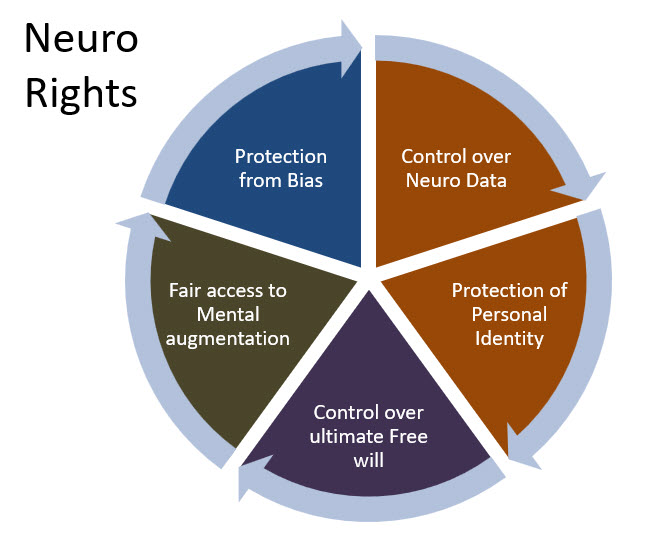Whenever an important action is undertaken by the Government, a part of the industry and the media is always objecting. It appears as if these companies are so used to operating without regulations in India that even a small guideline makes them feel that there is a great injustice committed.
Unfortunately, our judicial system is so sympathetic to anti-Government petitions that at the drop of the hat, a stay would be granted. Hence the Government has been rendered impotent in taking any firm decision related to IT.
For example, on October 17, 2000, India notified ITA 2000. This had a section 70 where the Government was empowered to declare any computer system as a “Protected System” and impose special penalties for contravening the provisions of the guidelines under this section. Under this section the Central Government had the power to notify any system as a “Protected System” and notify how they could be accessed, who would access etc.
On 19th January 2004, the Ministry of IT set up a division within its office and called it as “CERT-IN” to monitor the implementation of the security aspects in Government networks.
From October 27, 2009, the amended ITA 2000 became effective as per the amendments of 2008. This introduced modifications to Section 70 and also introduced two new sections namely Section 70A and Section 70B.
Under Section 70, the systems to be protected were designated as “Critical Information Infrastructure” which was defined as ” the computer resource, the incapacitation or destruction of which , shall have debilitating impact on national security, economy, public health or safety”. It was a definition that could include both Government and Private Systems.
According to Section 70A, a provision was made to recognize a “Nodal Agency” which was responsible for all measures of security including “Research” related to the protection of Critical Information Infrastructure.
According to Section 70B, the Computer Emergency Response Team (IN-CERT) was designated as the National Nodal Agency and vested the quasi judicial powers envisaged under ITA 2000/8.
Under Section 70B(4), it was prescribed that :
The Indian Computer Emergency Response Team shall serve as the national agency for performing the following functions in the area of Cyber Security,-
(a) collection, analysis and dissemination of information on cyber incidents
(b) forecast and alerts of cyber security incidents
(c) emergency measures for handling cyber security incidents
(d) Coordination of cyber incidents response activities
(e) issue guidelines, advisories, vulnerability notes and white papers relating to information security practices, procedures, prevention, response and reporting of cyber incidents
(f) such other functions relating to cyber security as may be prescribed
It was clear that with this change in ITA 2000, it became a duty of the CERT IN which was only a department of MeitY to be responsible for national cyber security. The person in charge was also re-designated as “Director General” and he had the power to prosecute any service provider or intermediaries, data centers, body corporate or any person who does not comply with his direction with a possible punishment of an imprisonment of 1 year and fine of Rs one lakh.
Though this power and responsibility came into existence from 27th October 2009, the CERT IN never assumed the changed role of IN-CERT and did not seriously grow out of its earlier departmental status.
On 16th January 2014, Government notified the “Information Technology (The Indian Computer Emergency Response Team and manner of Performing functions and duties) Rules 2013.
The rules prescribed that any non compliance of directions shall be put up to a review committee consisting of the Secretary of MeitY, Joint Secretary, Ministry of Law and Justice, Officer of DOT, Joint Secretary of Ministry of Home and the Group Coordinator for Cyber Law in Meity, for necessary action.
It is not clear whether this committee has met in the past and whether the powers envisaged under this notification has been properly exercised.
However, it is necessary for us to recognize that this data breach reporting requirement existed in law since 27th October 2009 with procedures available since 16th January 2014.
The industry which is today raising objections on the regulations notified on 28th April 2022 has not been aware of the developments of 2008 amendments of ITA 2000 or the rules notified in October 2009 or 2014. Further on 4th January 2017, a notification was again issued regarding the data breach notification where it was mandated that the Cyber Security incident reports have to be notified within a reasonable time.
Now the Government has again come up with a notification about the same mandatory requirements giving a further 6 months for implementation as if even the Government does not recognize that it has been its duty to collect the Cyber Security breach incident reports since 27th October 2009 and it has already issued many notifications for the same purpose.
The media is now raising excuses why the notification is difficult to implement. The website INC42.com which is known for its anti-Modi stand says that “India has limited Internet freedom again”.
The US-based technology industry body ITI, having global tech firms such as Google, Facebook, IBM and Cisco as its members, has sought a revision in the Indian government’s directive on reporting of cyber security breach incidents as if they are running the Indian Government and India cannot pass any law which is not acceptable to these Tech Companies.
Some of the Indian Companies who are ignorant of the ITA 2000 and the fact that this regulation has been in existence for 12 years without being implemented are raising their own objections such as “Increased Cost”, “Technical Difficulties” etc.
We would like to directly respond to some of the questions raised in some of the articles that have appeared in Economic Times and Indian Express in this regard and try to clarify the position.
Concern 1: ITI: According to ITI Country manager Kumar Deep, Incident reporting is counter productive and may negatively impact Indian and Global enterprises and undermine cyber Security.
It appears that ITI considers data breach notification is detrimental to the interest of the country where as hiding the incidents is acceptable. Does ITI hold the same view regarding the data breach notification requirements in each of the states of US as well as laws such as CCPA, GDPR etc? If reporting under those laws are not detrimental to the interests of USA, how does the data breach notification to the Indian Government authority alone is detrimental to the interest of India?
Concern 2: ITI: ITI has raised concerns over the mandatory reporting of breach incidents within six hours of noticing, to enable logs of all ICT systems and maintain them within Indian jurisdiction for 180 days, the overbroad definition of reportable incidents and the requirement that companies connect to the servers of Indian government entities.
It is noted that the objection is incorrect to the extent that companies need not connect to the servers of Indian Government Entities. What has been prescribed is only to ensure that the time servers are synchronized.
Reporting the incident within 6 hours is only after the organization comes to know of the incident and does not cover the inefficiency of the companies which surveys state take more than 9 months to detect a breach.
Keeping log records is a routine activity which may only require more domestic storage facilities and does not create any other issue. It is not necessary that these have to be shared with the Government on an ongoing basis. Only when an appropriate Government agency demands the information for any investigation, the information has to be shared. This is a law enforcement requirement which these Tech Companies are trying to avoid.
ITI should realize that the Tech Companies need to work within the laws of our country and cannot be considered as tools of terrorists and anti India elements.
Concern 3: INC 42: INC 42 suggests that VPNs should not be asked to keep the records of their subscribers and make it available to the Government if required. It has also objected to the extension of this requirement to Crypto Exchanges.
It is to be noted that the directives donot require the VPN hosting companies to share the content transmitted but only who is using their services. Allowing anonymous VPN services is the “Dark Web” operations of the Cyber Criminals and it cannot be supported by any law abiding country.
Concern 4: Money Control: According to the views from some experts, Money Control reports that the log retention capacity has to be newly created and hence would add to the cost. It also says that whether the companies are equipped to report such cases within six hours is questionable. Some experts have also raised the issue if they have to report every phishing mail received or attempted targeted scanning etc.
It is to be noted that reporting within 6 hours does not mean that the report should be complete with investigation, root cause analysis etc. What is required is the report that a data breach has happened. Under every law including GDPR or DPA 2021, it is envisaged that the report may be in phases and as and when more information is available, the report will be updated. However the first report within 6 hours ensures that the national body is aware of some thing going wrong in one company and it may help it plan a defence if similar incidents can occur in other companies.
What the companies need to do is to draft an email which records the data breach event the general description of the nature of the attack, its adverse impact etc. It is possible that IN CERT may actually help those companies who if they are not equipped to send an email within 6 hours will also not be capable of mitigating the risk in 60 days . Afterall we are talking of companies who take 270 days to even recognize a data breach and call themselves as champions of Cyber Security.
As regards whether every targeted scanning has to be reported etc., companies need to define what is a “Data Breach” and distinguish it from “Attempted Attacks”. When the attempted attack succeeds then only a “Data Breach” gets recognized. The rest gets recorded in the log records and could be useful for future investigations. In case of Phishing, it is not the incoming phishing mails that become reportable unless they have been responded to leading to a data compromise. What is important is whether the Company’s identity has been used by fraudsters in their phishing attacks. If so appropriate measures need to be taken to bring down the fake servers delivering the phishing messages and provide disclaimers and notifications in their websites.
In summary we can state that the objections raised by some of the industry members through the media are unreasonable and needs to be ignored.
It is unfortunate that in all such cases, it is Naavi.org which has to come to the defence of the Government and the Government agency itself remains a mute spectator to the media onslaught to the extent that Courts also feel that there should be some thing wrong with the Government since it is not confident of itself.
The IN-CERT should come of age at least now and realize that it is not the old CERT-IN and I urge the Director General to come out with his own Press Conference defending the notification more strongly than what Naavi,org needs to do.
 We are once again reminded of the story in Ramayana where Hanuman did not know his powers and had to be reminded by Jambavanta before Hanuman got the confidence to jump across the ocean. IN-CERT is also like the Hanuman who does not know its powers and has to reminded.
We are once again reminded of the story in Ramayana where Hanuman did not know his powers and had to be reminded by Jambavanta before Hanuman got the confidence to jump across the ocean. IN-CERT is also like the Hanuman who does not know its powers and has to reminded.
Naavi.org has already suggested that after the DPA 2021 is passed, the role of DG, IN CERT may get further marginalized. Just as the late Mr T.N. Seshan revived the self respect of the Election Commission, the current DG, In CERT has the responsibility to assert the role of the office of DG, IN-CERT and ensure that the interest of the office is protected. I urge the Secretary of MeitY to facilitate this transition of CERT-IN to IN-CERT and make it a relevant body.
(Comments are welcome)
Naavi
Reference Articles:
Global tech industry body seeks revision in India’s directive on cyber security breaches
Tech companies have a few queries on CERT-In’s cybersecurity rules
India Limits Internet Freedom Again; Mandates User Data Collection For VPNs-INC42
5 issues with the recent Cert-In directions and what they mea… Mnoney Control
Why India’s New Cybersecurity Directive Is A Bad Joke… Medianama.com
Reference Circulars
CERT In Rules dated 16th January 2014
Notification of 4th January 2017
Notification of April 28, 2022
Earlier Articles at Naavi.org













